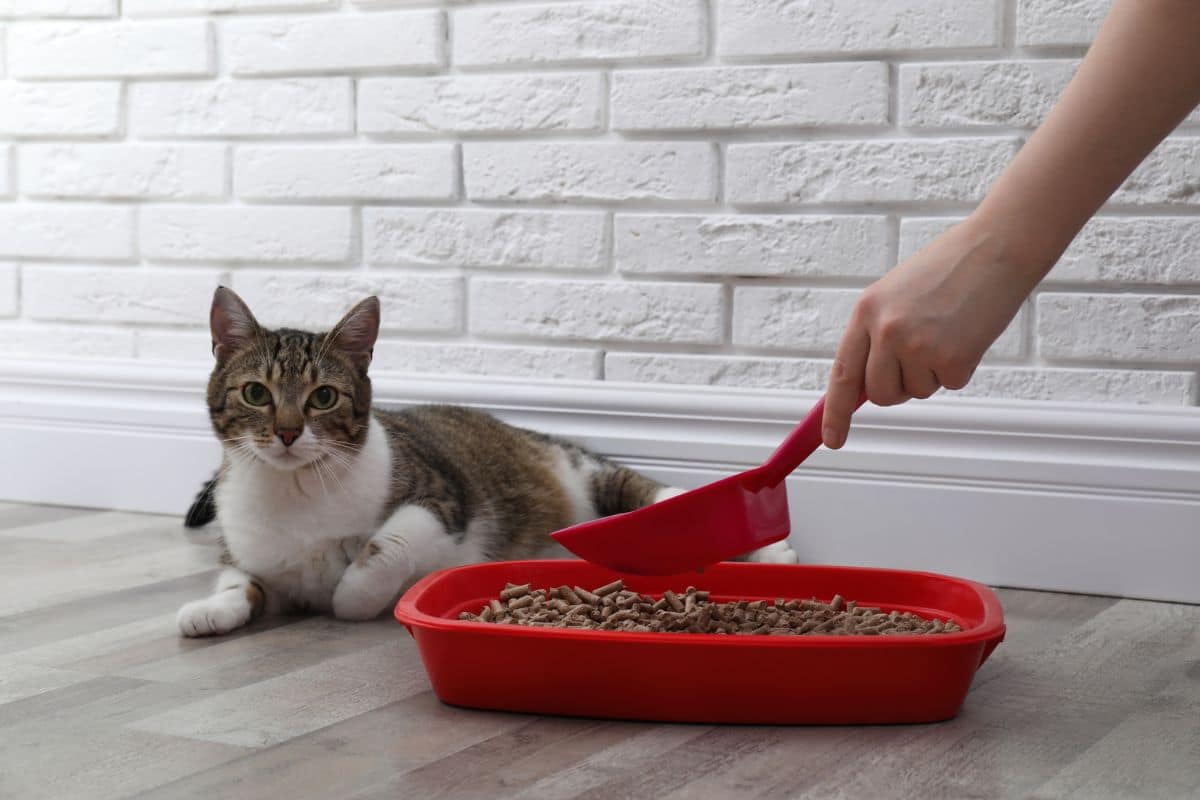Picture this: You wake up to the smell of something foul, something decidedly un-cat-like wafting through your home. You search, your nose guiding you, until you find the source: a pile of cat poop, not in the litter box, but on the cold, hard floor. It’s a scene straight out of a feline nightmare, and you, the loving owner, are left bewildered and desperate for answers.

Image: petmaximalist.com
Why would a cat, a creature known for its impeccable hygiene, choose to defecate outside the confines of its designated toilet? The answer, unfortunately, isn’t always simple. Unlike a toddler who might be playing a game of defiance, your cat’s behavior is likely driven by a deeper, often unspoken need. It’s up to you, the cat parent, to become a detective, investigating the clues to bring your feline friend back from the brink of bathroom misbehavior.
The Mystery of the Pooping Palace: Exploring the Causes
Deciphering a cat’s pooping preference can feel like cracking an ancient mystery. But fear not, this isn’t a case for Indiana Jones; it’s a case for understanding feline behavior and physiology, and we’re about to embark on that journey together.
1. Litter Box Blues: When the Toilet’s Not So Great
Let’s face it, cats are finicky creatures. If their litter box isn’t up to snuff, they’re likely to go seeking more appealing options, often ending up on your pristine floors.
- Dirty Litter Box: Just like humans, cats prefer their bathroom to be clean. If you’re not scooping the litter box frequently (ideally, at least once a day), it’s likely to become too soiled for your cat’s delicate nose.
- Excessive Litter: Too much litter can make it difficult for a cat to dig and bury their waste, creating a frustrating experience.
- Wrong Litter Type: Cats can have preferences when it comes to litter texture and scent. Experiment with different types to find one that suits your cat’s taste.
- Litter Box Location: Cats need a litter box in a quiet, private location, away from loud noises and high traffic areas. If they feel exposed while doing their business, they might seek a more secluded spot.
2. Medical Marvels: When Health Holds the Key
Sometimes, pooping problems are rooted in medical issues that require professional intervention.
- Urinary Tract Infections (UTIs): UTIs can make urination painful, causing a cat to avoid the litter box.
- Constipation: When cats have trouble eliminating waste, it can lead to discomfort and accidents.
- Feline Lower Urinary Tract Disease (FLUTD): FLUTD is a complex condition that can cause blockages and behavioral changes.
- Other Medical Issues: Other health problems like arthritis, anxiety, and cognitive decline can also impair a cat’s ability to use the litter box.

Image: www.ipetcompanion.com
3. Behavioral Biases: The Whispers on the Wind
Sometimes, behavioral factors can contribute to a cat’s disdain for the designated litter box.
- Stress and Anxiety: Life changes like moving house, welcoming a new pet, or even a change in routine can stress a cat out, leading to behavioral issues.
- Fear and Aggression: If a cat feels threatened or intimidated, they might express their distress through accidents.
- Marking Territory: Cats often use urine or feces to mark their territory and communicate with other animals. If your cat is feeling stressed or insecure, they may feel the need to reinforce their dominance through marking.
- Previous Negative Experiences: If your cat had a negative experience with a particular litter box (being trapped, for example), they might avoid it in the future.
Solving the Mystery: Strategies for Success
Now that we’ve unraveled the possible culprits, it’s time to turn the detective work into positive action. Here’s a toolkit for you.
- Rule Out Medical Issues: Take your cat to the vet for a checkup. A professional diagnosis can rule out underlying health issues and pave the way for effective solutions.
- Litter Box Audit: Do a thorough assessment of your litter box setup.
-
- Location:** Is it in a quiet, private spot?
-
- Size:** Is it large enough for your cat to comfortably turn around?
-
- Litter:** Is the litter type suitable for your cat?
-
- Cleanliness:** Are you scooping it at least once a day?
-
- Stress Management:
-
- Feliway diffuser:** This pheromone-based product can help calm stressed cats.
-
- Create a safe haven:** Make sure your cat has access to a quiet, cozy space where they feel secure.
-
- Minimize disruptions:** Try to maintain a consistent routine as much as possible.
-
- Clean Up Accidents Thoroughly: Use an enzymatic cleaner to remove the odor completely, preventing your cat from being drawn back to the same spot.
- Positive Reinforcement: Reward your cat for using the litter box with treats or praise.
Expert Insights for Every Pooping Problem
To further refine your detective skills, we asked renowned cat behaviorist Dr. Sarah Jones for her expert insights. Dr. Jones emphasizes that understanding the root cause of a cat’s pooping problem is crucial. “Don’t just try to mask the symptom,” she cautioned, “Address the underlying issue, whether it’s medical, behavioral, or environmental, to find a long-lasting solution.”
Dr. Jones also highlights the importance of patience and consistency. “It takes time to work through these issues,” she said. “Keep a positive attitude and be persistent in your efforts to make the litter box the most attractive option for your cat.”
Why Is My Female Cat Pooping On The Floor
Conquering the Mystery: Reclaiming Your Peace of Mind
The journey of understanding your cat’s pooping behavior may require patience and persistence, but it’s worth it. By eliminating medical issues, addressing environmental factors, and managing stress, you’ll not only reclaim your pristine floors but also strengthen the bond with your beloved feline friend. Remember, with love, understanding, and a little detective work, even the most puzzling pooping mysteries can be solved.






